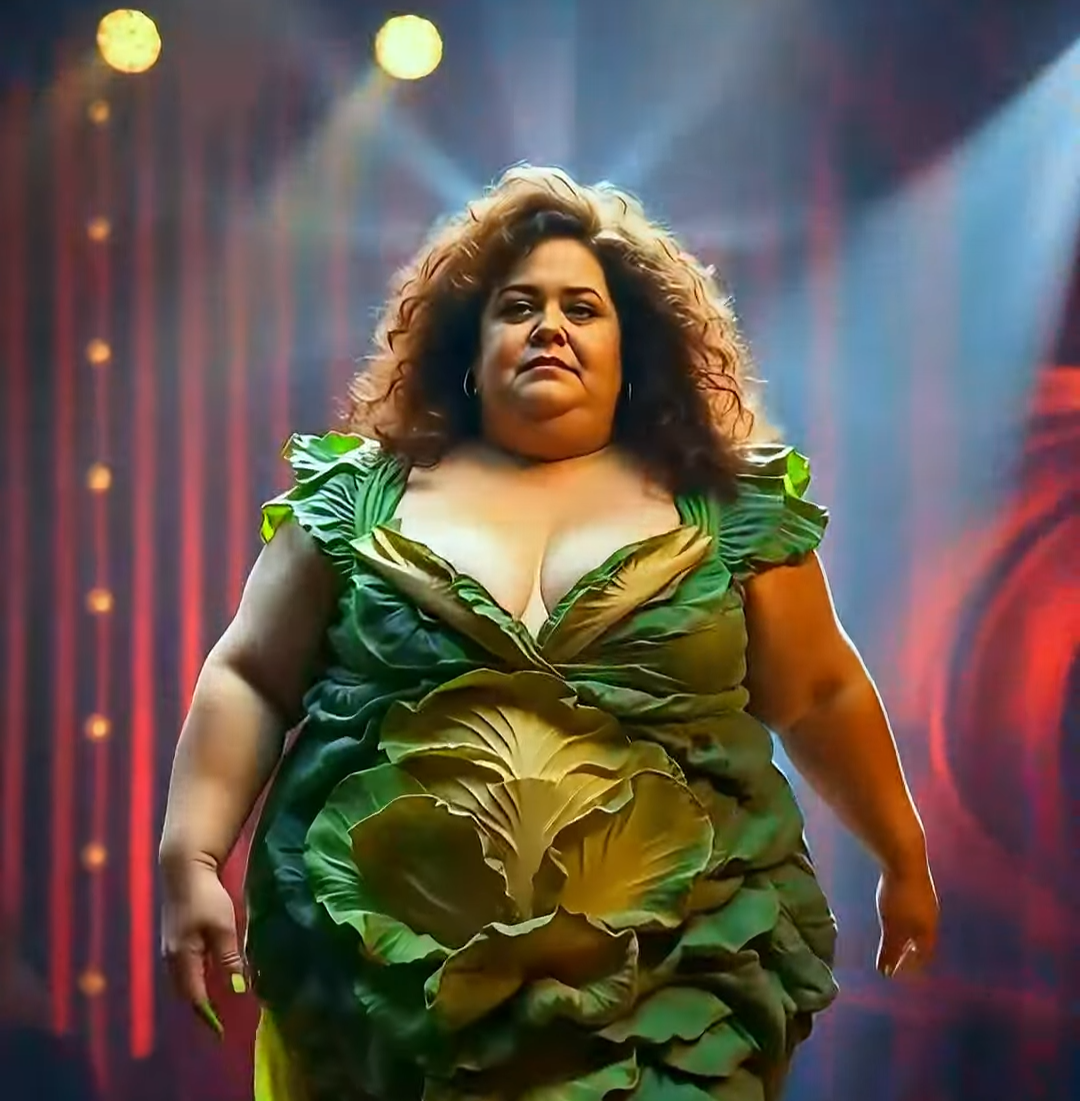The lights of the America’s Got Talent stage dazzled as the audience waited in anticipation. A woman stood center stage, her presence commanding attention. She was dressed in an extravagant, colorful gown, a vibrant concoction of blues, greens, and reds, but there was something different about her. Her eyes sparkled with excitement as she stood tall, her confidence unwavering.
The music started, soft and whimsical at first, and as she moved, the fabric of her gown seemed to shimmer in the light. The crowd watched in curiosity, not knowing what was about to unfold. With a sudden, unexpected flourish, she spun around. The gown, which had once appeared elegant and glamorous, began to change before everyone’s eyes.
In a flash, the dress started to transform—its layers of fabric unfurled and reformed. Slowly, the colors shifted, and the once-pristine gown was now a massive, leafy green cabbage, wrapped neatly around her. The audience gasped in disbelief as the woman stood there, her new “dress” composed entirely of cabbage leaves—each perfectly arranged, crisp and vibrant.
The transformation was nothing short of magical. The woman smiled as she twirled, showing off her new cabbage creation. The leaves rustled and crinkled with every movement, adding an unexpected charm to the performance. The judges looked on, stunned by the creativity and sheer boldness of it all.
The crowd erupted into applause, many still trying to process what they had just witnessed. This wasn’t just a performance; it was an act of pure surprise, showing the woman’s ability to turn the ordinary into the extraordinary. What had once been a simple, elegant gown had now become a whimsical work of art—a cabbage dress that defied all expectations.
As she struck a final pose, the audience cheered, amazed at how she had taken something as simple as a cabbage and turned it into a spectacle of creativity and wonder.
